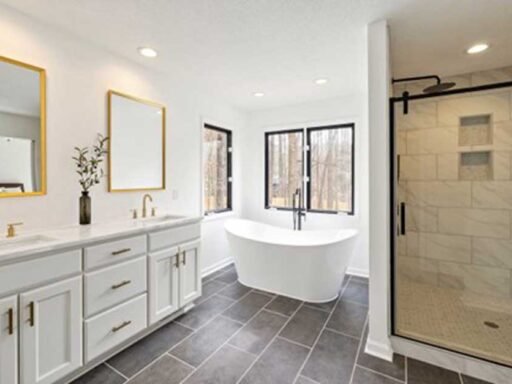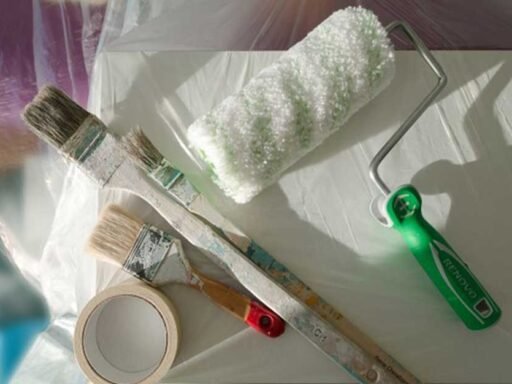Have you noticed your energy bills creeping higher every month or wondered how you can reduce your environmental footprint? Many homeowners are seeking ways to make their homes more sustainable and efficient. Eco-friendly home improvements not only help the planet but can also lead to significant savings and a more comfortable living environment.
This article will guide you through several eco-friendly home improvements that are easy to implement and can make a substantial impact.
1. Energy-Efficient Lighting
Switching to energy-efficient lighting is one of the simplest and most effective ways to make your home more eco-friendly. Traditional incandescent bulbs consume a lot of energy and have a short lifespan. In contrast, LED bulbs use significantly less energy and can last up to 25 times longer.
Benefits of LED Bulbs: LED bulbs are more energy-efficient than traditional bulbs, meaning they use less electricity to produce the same amount of light. This can lead to significant savings on your energy bills. Additionally, because LEDs last longer, you won’t need to replace them as often, reducing waste.
Installation Tips: Replacing old bulbs with LEDs is straightforward. Simply unscrew the old bulb and screw in the new one. Make sure to choose the right brightness and color temperature for each room to create a comfortable lighting environment.
2. Installing Metal Roofing
Choosing the right roofing material can have a substantial impact on your home’s energy efficiency and environmental footprint. Many homeowners are turning to metal roofing as an eco-friendly alternative to traditional asphalt shingles.
Why Metal Roofing?
Metal roofing offers numerous benefits, including durability, energy efficiency, and recyclability. Metal roofs can last 50 years or more, which is two to three times longer than asphalt shingles. They are also resistant to extreme weather conditions, reducing the need for repairs and replacements.
Energy Savings: One of the significant advantages of metal roofing is its ability to reflect solar heat, reducing cooling costs during the summer. This reflective property can lower your energy bills and make your home more comfortable during hot weather.
Professional Installation: While DIY enthusiasts might be tempted to install a metal roof themselves, it’s best to hire a professional. Proper installation is crucial to maximize the benefits of metal roofing.
3. Solar Panels
Harnessing the power of the sun is an excellent way to reduce your dependence on non-renewable energy sources. Solar panels convert sunlight into electricity, providing a renewable energy source for your home.
Renewable Energy Source: Solar panels offer a clean and sustainable way to generate electricity. By installing solar panels, you can reduce your reliance on fossil fuels and decrease your carbon footprint.
Cost Savings: Although the initial investment in solar panels can be significant, the long-term savings on energy bills can be substantial. Many homeowners find that their solar panels pay for themselves within a few years, thanks to the reduction in electricity costs.
Installation Tips: If you’re considering solar panels, start by assessing your roof’s suitability. South-facing roofs with minimal shading are ideal for solar panels.
4. Water-Saving Fixtures
Reducing water consumption is another effective way to make your home more eco-friendly. Installing water-saving fixtures can help you conserve water without sacrificing performance.
Low-Flow Toilets and Showerheads: Low-flow toilets use significantly less water per flush compared to traditional toilets, while low-flow showerheads reduce water usage without compromising water pressure. These fixtures can help you save thousands of gallons of water each year.
Installation Tips: Replacing your existing fixtures with low-flow options is usually a straightforward process. Follow the manufacturer’s instructions or consult a plumber if you’re unsure how to proceed.
Benefits: Besides conserving water, these fixtures can also lower your water bills. Additionally, reducing water usage helps protect local water resources and reduces the energy required for water heating.
5. Insulation Improvements
Proper insulation is essential for maintaining a comfortable indoor temperature and reducing energy consumption. Upgrading your home’s insulation can significantly improve its energy efficiency.
Importance of Proper Insulation: Good insulation helps keep your home warm in the winter and cool in the summer, reducing the need for heating and cooling. This not only lowers your energy bills but also reduces your home’s carbon footprint.
Types of Insulation: There are several eco-friendly insulation materials to consider, such as recycled denim, cellulose, and spray foam. These materials provide excellent thermal insulation and are often made from recycled or sustainable sources.
6.Energy-Efficient Windows
Old, drafty windows can let in cold air during the winter and hot air during the summer, forcing your HVAC system to work harder.
Benefits: Energy-efficient windows are designed to reduce heat transfer, keeping your home comfortable year-round. These windows can help reduce drafts, improve indoor comfort, and lower your energy bills.
Types of Windows: Look for windows with low-E (low-emissivity) glass, multiple panes, and insulating gas fills. These features enhance the window’s thermal performance and energy efficiency.
Installation Advice: Replacing windows can be a complex task, so it’s best to hire a professional. Proper installation ensures that the windows perform as expected and provide the maximum energy-saving benefits.
7. Sustainable Landscaping
Your home’s exterior is just as important as the interior when it comes to eco-friendly improvements. Sustainable landscaping practices can reduce water usage, lower maintenance costs, and create a healthier environment.
Native Plants: Choose native plants that are adapted to your local climate and soil conditions. These plants typically require less water, fertilizer, and pesticides than non-native species, making them a more sustainable choice.
Rainwater Harvesting: Harvesting rainwater for your garden is a great method to save water. By setting up a rain barrel, you can collect runoff from your roof and use it to irrigate your plants. This practice not only lowers your water bills but also aids in managing stormwater runoff.
Conclusion
Making eco-friendly home improvements is a practical way to reduce your environmental impact while saving money and enhancing your home’s comfort. From simple changes like switching to energy-efficient lighting and installing water-saving fixtures to more significant upgrades like metal roofing and solar panels, there are numerous ways to make your home more sustainable.
Taking these steps not only benefits the environment but also improves your quality of life. By investing in eco-friendly improvements, you can enjoy lower energy bills, a healthier living environment, and the satisfaction of knowing you’re making a positive difference.






